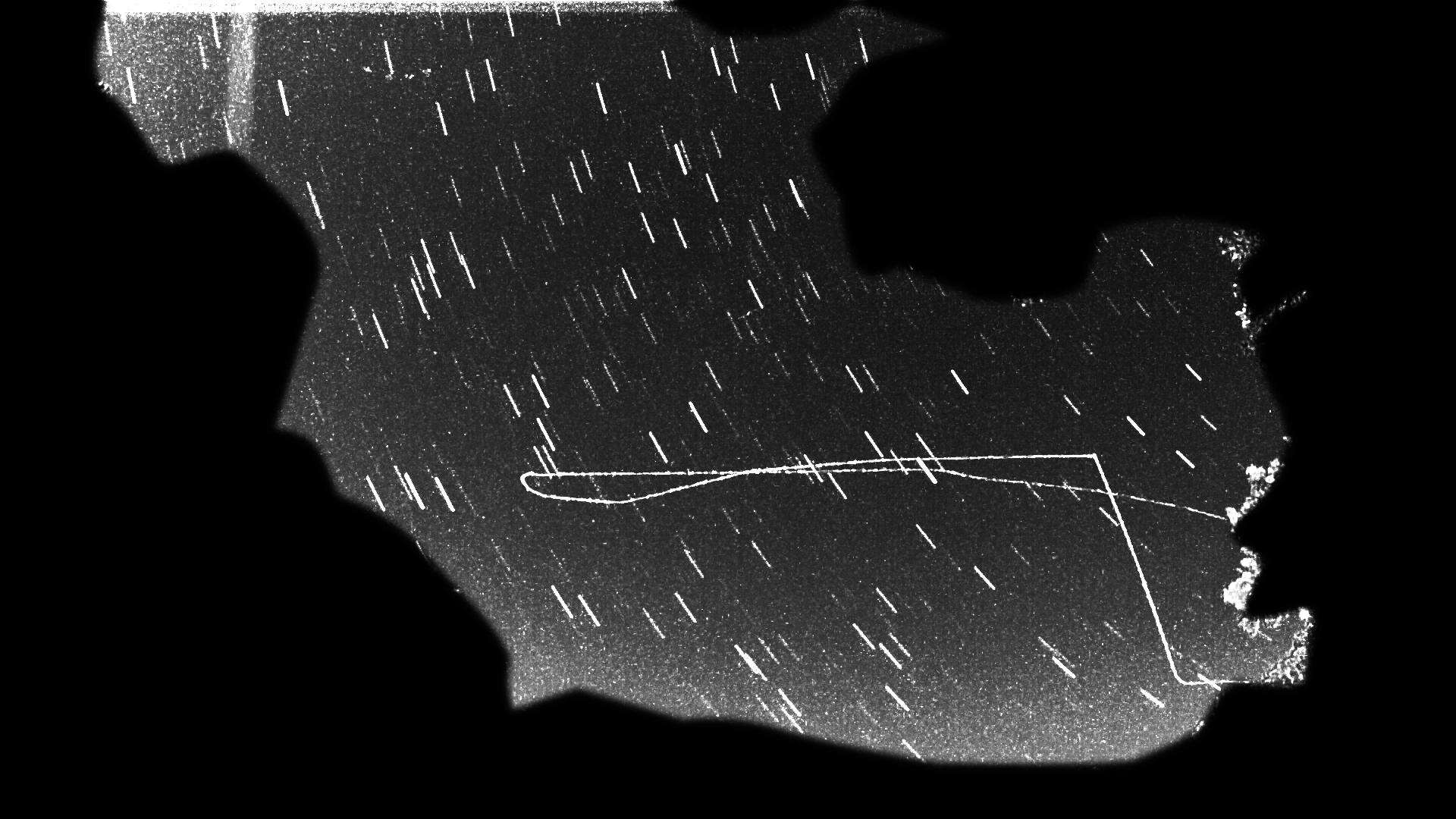
Reported By: bit25slim on September 30, 2023
The video, originally 10 minutes in duration, captures an unidentified aerial phenomenon (UAP) that persists for approximately 5 minutes. This footage has been meticulously edited to exclude any superfluous content, ensuring that viewers are presented with only the crucial encounter. In the ensuing analysis, the footage is initially accelerated to a playback speed of 500% before reverting to real-time playback to scrutinize the finer details of the phenomenon. All analysis files can be accessed here.
10 Minute video, Comes in bottom right (Northwest), at around 5:30/36 something appears to either shoot away from the UAP or is something entering/leaving the atmosphere based on speed and light. Camera is shit quality WYZE pushed to a bridge that records to my NVR. Its in infrared. It looked far away and high up, I get starlinks a lot and other sat's and lots of traffic from/to ATL. This didn't fit that.
EDIT:: This is an infrared Wyze camera and facing West/North West. VEGA is almost directly bottom of screen I think this is about a 90-degree fov? Give or take.
Original Post Source
The video in question is a poor quality recording at a rate of 15 frames per second (fps) and is heavily compressed in the h264 format (Original Video Source). Recognizing the inherent constraints of the raw footage, a series of enhancement techniques were employed to improve visibility and discernibility of the UAP. An initial step involved conducting a contrast enhancement in the software DaVinci Resolve. This operation specifically applied a robust luma curve to accentuate differences in lighting, while simultaneously amplifying midtone details and sharpness.
Subsequently, the enhanced video was transformed into a TIFF image sequence. This sequence was then subjected to a stacking process in the software StarStaX 0.71. The objective of this technique was to provide a clearer visualization of the UAP's motion against the stellar backdrop. The outcome was a composite image wherein the UAP's trajectory was discernibly juxtaposed against the static stars.

For a more comprehensive understanding, this stacked image was reintroduced into the Resolve software, overlaying it on the original video using the exclusion composite mode. The video was then inverted, bringing to the fore both the UAP and stars within their distinct motion paths. What emerges from this process is a clearer representation of the UAP's anomalous movement, which is unparalleled in comparison to any known terrestrial aircraft.
Notably, an artifact is visible at the top left, attributable to a bug and a potential bat or bird passing by. These brief appearances, while distinct from the UAP, reinforce that the observation is not of any known living organism. The UAP's movement is marked by intentionality, especially when it elects to travel in a straight line. Its motion is notably aberrant; it exhibits almost instantaneous acceleration without any discernible transition between resting and moving states. Furthermore, the absence of visible propulsion and the instantaneous acceleration underscore several characteristic features of typical UAP sightings.
Given the composite evidence and the stringent analytical process, it is deduced that the footage is not a result of computer-generated imagery (CGI). It undoubtedly captures an actual object in the sky, though its precise nature remains undetermined.
The compiled data and analysis affirm the presence of an unidentified object with distinct aerial characteristics. While the object's exact origin and nature remain ambiguous, the analytical methodology provides an enhanced representation, emphasizing the anomalous movement patterns of the observation.